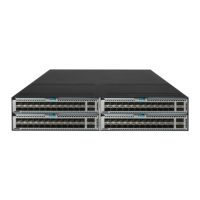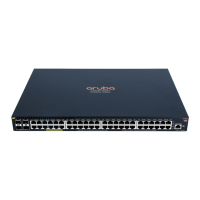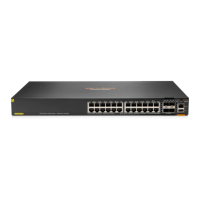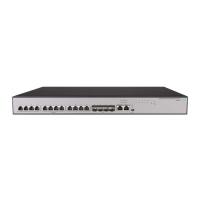250
[CE2-Vlan-interface12] ip address 20.0.0.2 24
[CE2-Vlan-interface12] quit
# Establish an EBGP peer relationship with PE 2, and redistribute VPN routes.
[CE2] bgp 65002
[CE2-bgp-default] peer 20.0.0.1 as-number 600
[CE2-bgp-default] address-family ipv4 unicast
[CE2-bgp-default-ipv4] peer 20.0.0.1 enable
[CE2-bgp-default-ipv4] import-route direct
[CE2-bgp-default-ipv4] quit
[CE2-bgp-default] quit
488BVerifying the configuration
# Execute the display ip routing table command on CE 1 and CE 2 to verify that CE 1 and CE 2
have a route to each other. Verify that CE 1 and CE 2 can ping each other. (Details not shown.)
250BConfiguring MPLS L3VPN carrier's carrier in the same AS
489BNetwork requirements
Configure carrier's carrier for the scenario shown in 809HFigure 71. In this scenario:
• PE 1 and PE 2 are the provider carrier's PE switches. They provide VPN services for the
customer carrier.
• CE 1 and CE 2 are the customer carrier's switches. They are connected to the provider carrier's
backbone as CE switches.
• PE 3 and PE 4 are the customer carrier's PE switches. They provide MPLS L3VPN services for
the end customers.
• CE 3 and CE 4 are customers of the customer carrier.
• The customer carrier and the provider carrier reside in the same AS.
The key to carrier's carrier deployment is to configure exchange of two kinds of routes:
• Exchange of the customer carrier's internal routes on the provider carrier's backbone.
• Exchange of the end customers' VPN routes between PE 3 and PE 4, the PEs of the customer
carrier. In this process, an MP-IBGP peer relationship must be established between PE 3 and
PE 4.

